HINCKLEY — In the rolling hills of central Maine, the farm fields are brown and full of stubble.
But in the high tunnels at Kennebec Valley Community College, late-autumn crops are thriving. Katherine Creswell, the college’s farm manager, shows off the bounty.
“We have lettuce that will stay good until Christmas, I think,” Creswell said on a recent tour. “A bunch of kale, some broccoli, scallions, cilantro, parsley, spinach, beet greens, chard, and corn salad or mâche. The café on campus will use a lot of this stuff.”
Over at the college’s new culinary school, the freezers have been packed with the farm’s summer harvest to get the students through their winter cooking classes. Tomatoes have been transformed into sauce, herbs and peppers have been dehydrated. In January, chef instructor Kelly Anne Clarke says, the kitchen will start getting meat chickens from the farm.
Kennebec Valley is one of the last of Maine’s community colleges to offer a culinary arts program. But it is the first in the state to have its own certified organic farm and a two-year degree in sustainable agriculture. Last fall, the college linked the two programs, creating the “Center for Farm-to-Table Innovation” at its new Harold Alfond Campus, located seven miles down the road from the main campus. The school purchased the 600-acre property three years ago. Of the 120 acres of open fields, Creswell and the students cultivate four acres into vegetable crops, pasture livestock on 10 acres, and hay the balance.
Working the study of sustainability and farm-to-table practices into coursework is a national trend at culinary schools, according to Cindy Komarinski, a professor in the culinary arts and hospitality programs at Westmoreland County Community College in Youngwood, Pennsylvania. Komarinksi does accreditation site visits at schools throughout the country for the American Culinary Federation (and happens to have a farm of her own).
To win the accreditation today, Komarinski said, a school must include the concept of sustainability in its “learning outcomes,” be it through lectures, lab courses, field trips to farms, or kitchen-related concepts such as recycling, water usage, energy consumption and waste management. But Komarinski said while most culinary schools have planted gardens to grow some of their own produce, she didn’t know of any other like Kennebec Valley Community College with access to their own farm.
COOKING AND GLEANING
The college’s first class of 10 culinary arts students is set to graduate in May; its first seven sustainable agriculture students graduated last May. This year, 38 culinary students and 28 sustainable agriculture majors are enrolled, and one student is getting a double degree.
In the culinary track, ages and ambitions vary. “Some of them are talking about having their own restaurants and bed and breakfasts on their own farm,” Clarke said. “They’re combining their kitchen and their farming experience with tourism and agritainment.”
Students in the culinary program must take a Sustainable Food Systems class and can choose an agriculture class as an elective. Ag students have the option of taking a food science elective, and there is other crossover. The week before Thanksgiving, for example, two big hogs, two lambs and a ewe raised on the farm were slaughtered and culinary students used the animals to learn butchering skills. The ag students who raised the animals were invited to watch.
Many of those ag students fall into the category of “self-sufficient homesteader,” Creswell said. “But our program is geared toward the farm entrepreneur, the field manager, the barn manager, and someone who wants to go off and get a four-year degree in ag and become an extension agent,” Creswell said.
Ag students are not required to take a culinary class because of the extra associated costs, including tools and uniforms. But Clarke hopes to change that one day. “I would like to have a class that starts on the farm and ends in the kitchen so they can see the process through,” she said. “There is some disconnect for them there. They raise a product and then it disappears, and they don’t ever see it again.”
THE FARM CONNECTION
On a recent November day, students in the Classical Cuisine class were busy working in the kitchen lab, creating dishes from their favorite region of France. At her station, 55-year-old Brenda Madden was chopping chicken for a chicken, spinach, mushroom and Swiss crepe – the spinach came from the farm.
Madden recalled sitting with a friend in the kitchen of her 1798 farmhouse in North Anson a year ago August, talking about their lives.
“Neither one of us was particularly where we wanted to be,” she said. “This was on a Saturday, and on Monday I looked online. I’ve taken classes at KVCC before, and so I immediately checked their website and the first thing that came up was Culinary Arts, from farm to table. I love to cook. And I live on a farm.”
By Wednesday, she was enrolled, and she started classes a week and a half later.
Madden’s cooking partner, Victoria Brown of Vassalboro, is a 32-year-old stay-at-home mom who had been baking for family and friends for years. She signed up at the college not because of the sustainability angle but because the school is close to home.
But even for students like Brown, the farm connection is always somewhere in the background. She knew, for example, that the apples she used for her apple-cranberry-Calvados sweet crepe were sourced from a local orchard.
FARM-TO-TABLE-TO-CLASSROOM
In Maine’s culinary classrooms, the emphasis on farm-to-table ranges from very little to quite a lot.
“It’s not a huge focus of ours,” said Jay Demers, chair of the culinary department at Eastern Maine Community College in Bangor. “It’s certainly discussed, but we haven’t adjusted our curriculum to reflect it.”
That said, Demers added that farm-to-table ideals are embedded to some extent. He brings in local products as much as he can and uses local animals for butchery demonstrations. For one cooking assignment, students must shop at the local farmers market for ingredients.
But the emphasis only goes so far. Demers said he was asked by a prospective student if the school buys all local, organic produce, and he had to tell her no. Why? When he’s teaching students basic cuts for a carrot, the class goes through 150 pounds of them. He can buy commercial carrots for 15 cents a pound; local, organic carrots cost about $3 a pound. “We do what we can where we can,” he said.
The situation is similar at York County Community College in Wells, where culinary arts instructor Charles Galemmo talks a lot about seasonality and locally produced food in his advanced culinary techniques class, and he teaches students how to make cheese. The school also sends a lot of interns to farm-friendly restaurants, such as 50 Local in Kennebunk.
“We always try to keep current with what’s going on in the industry so our students have a knowledge and appreciation of it,” Galemmo said.
Students at Southern Maine Community College have expanded their longstanding community lunch program, taking some of the meals in a farm-to-table direction. The menus note which local farm provided the ingredients, and the students learn about local, sustainable food systems while developing those menus, college spokesman Clarke Canfield said. (The next luncheon is scheduled for Dec. 16 at noon.)
MAINE ON THE MENU
Of all of these programs, the Kennebec Valley Community College’s culinary school appears to have the strongest connections to agriculture. The school’s farm includes a livestock classroom, room for 30 laying hens, 16 broilers and a few sheep to roam, and a vegetable wash, pack and processing storage facility. The historic barn was refurbished, another building is being renovated, and Creswell hopes to expand the farm’s small orchard. Creswell and Clarke consult constantly on new plantings. Clarke estimates that by the time the first class of culinary students graduate next spring, 65 percent of the vegetables and meats they handle in the classroom will come from the farm. It will never be 100 percent, she said, because the students also need to learn how to cook seafood and international cuisine.
The kitchen lab, decked out with shiny new appliances, is located in the Averill Building, along with a separate demonstration kitchen. Just outside is a new wood-fired oven.
April Hatch, 47, of Farmingdale was working retail before enrolling in cooking school. As she made pasta by hand in the school’s kitchen, Hatch said she wanted to find a career that was more than a paycheck.
She didn’t know about the partnership with the sustainable agriculture program when she applied to the college, but she appreciates it now. Sustainable agriculture, she said, helps support the local economy and encourages people to eat “less things out of boxes and more things out of gardens.”
Send questions/comments to the editors.


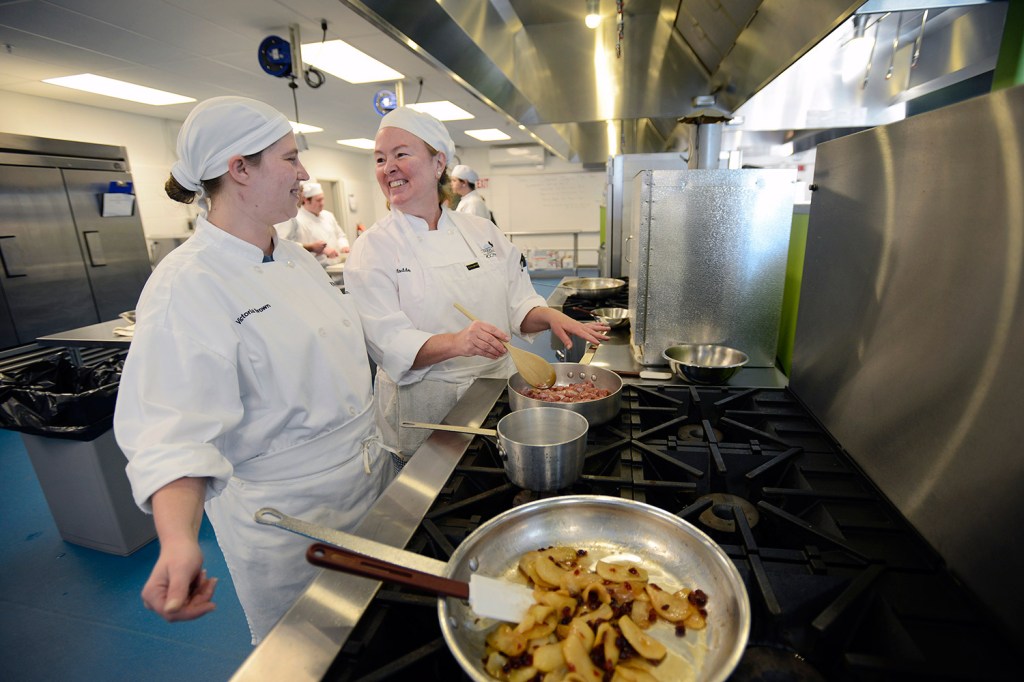
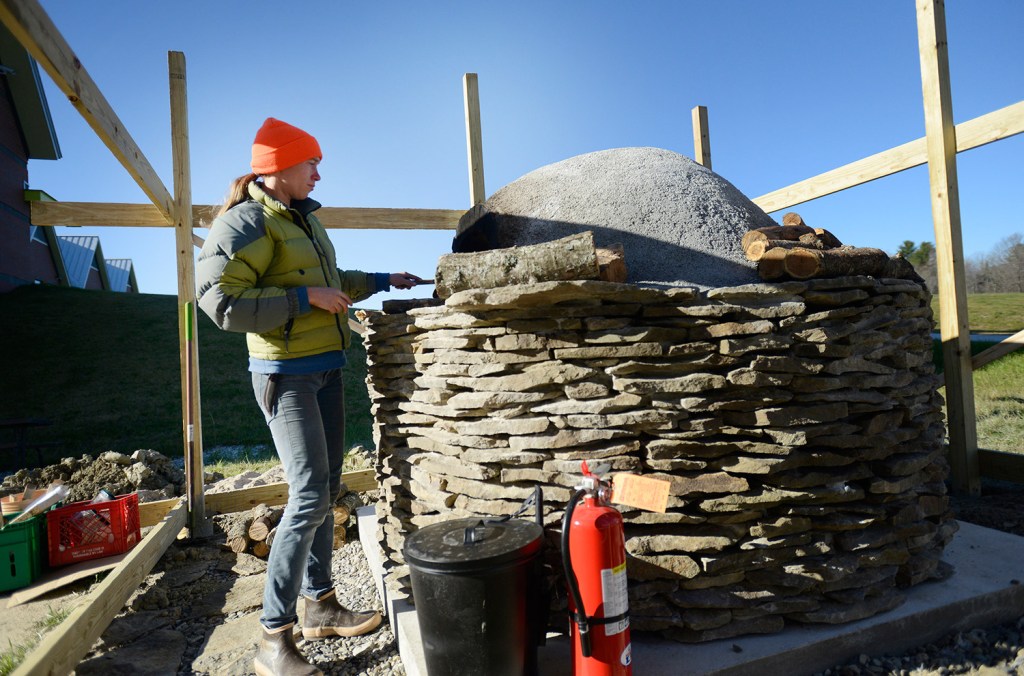
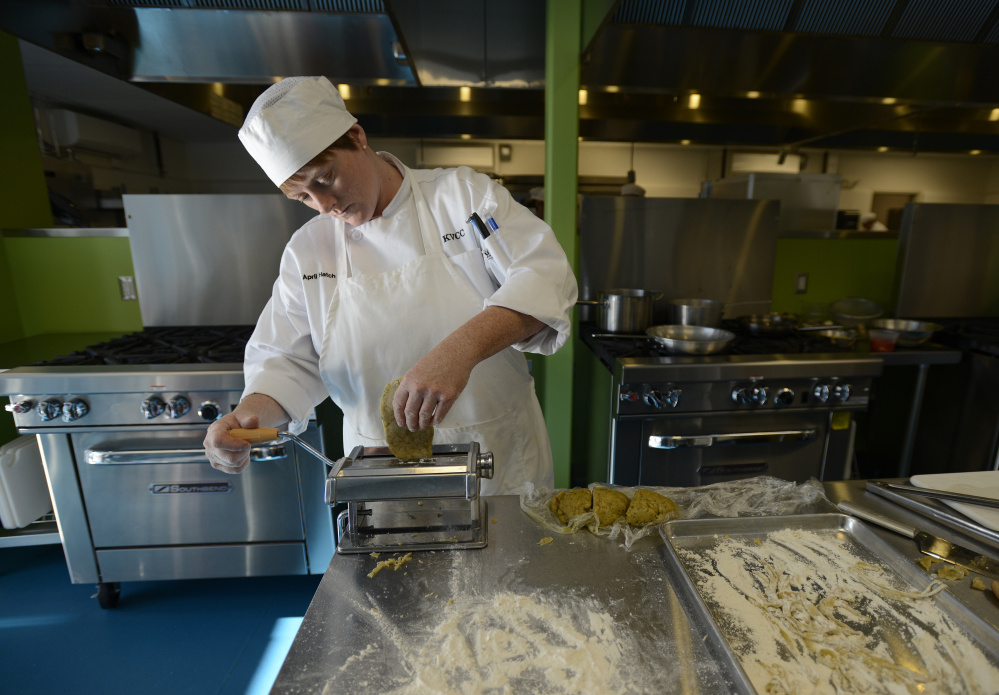
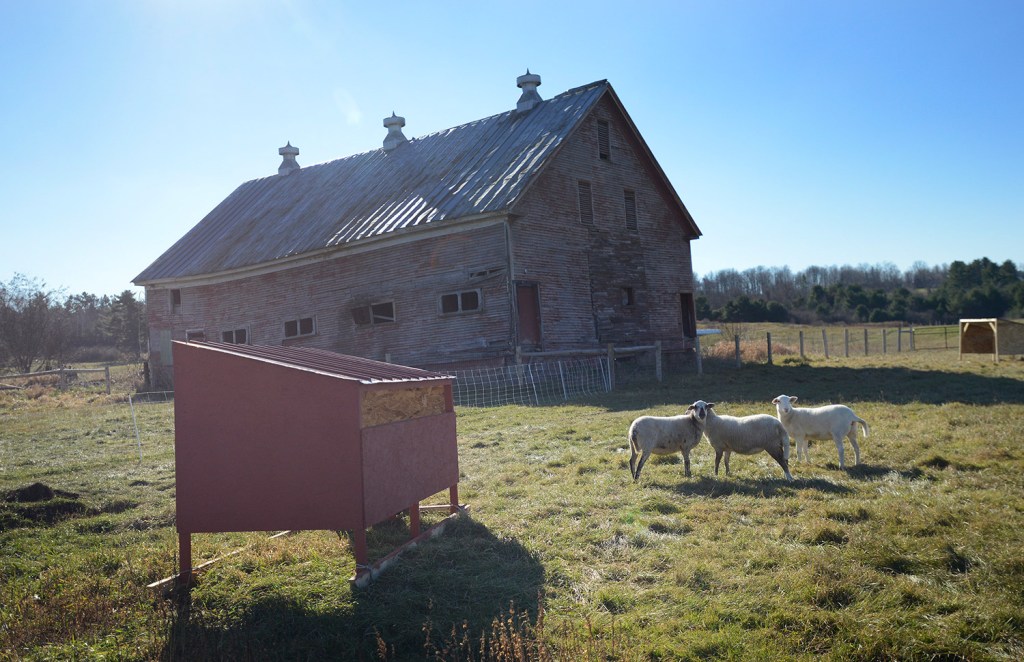
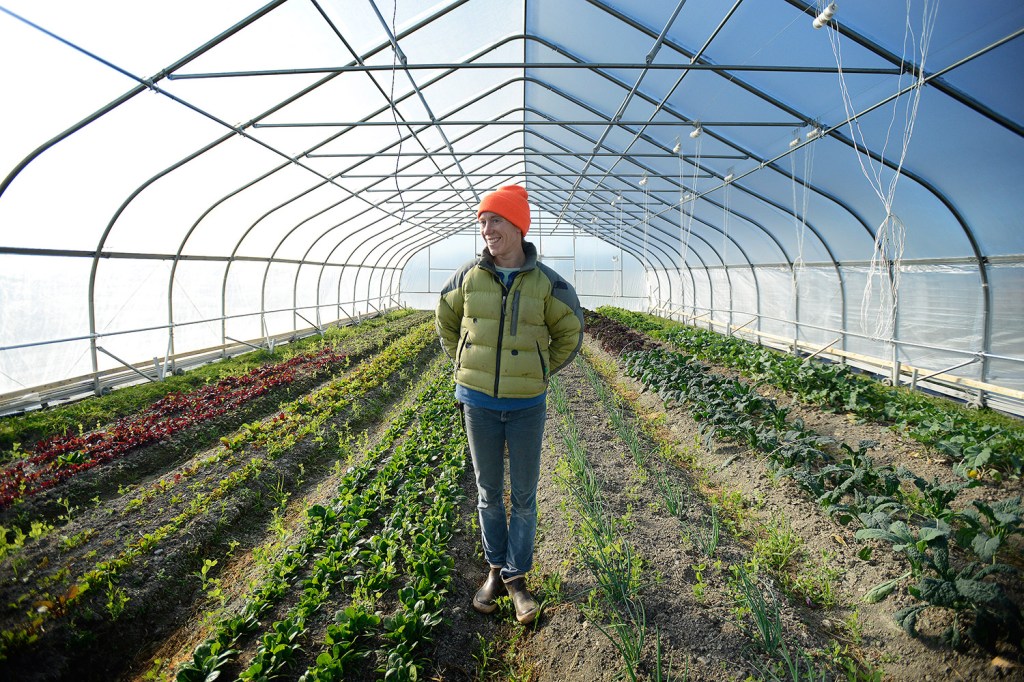
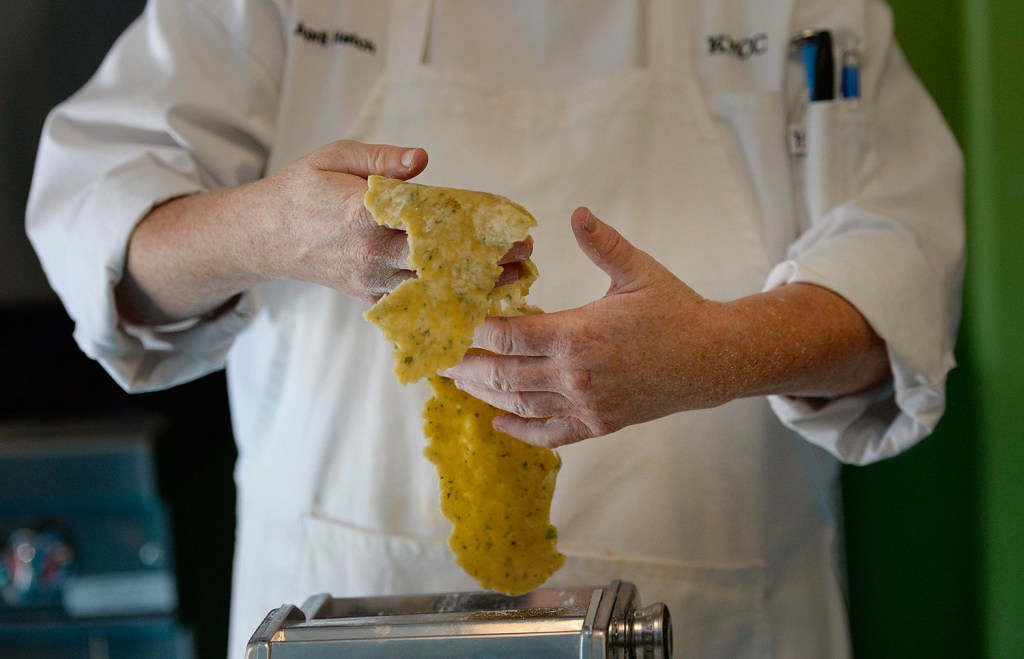

Success. Please wait for the page to reload. If the page does not reload within 5 seconds, please refresh the page.
Enter your email and password to access comments.
Hi, to comment on stories you must . This profile is in addition to your subscription and website login.
Already have a commenting profile? .
Invalid username/password.
Please check your email to confirm and complete your registration.
Only subscribers are eligible to post comments. Please subscribe or login first for digital access. Here’s why.
Use the form below to reset your password. When you've submitted your account email, we will send an email with a reset code.